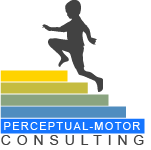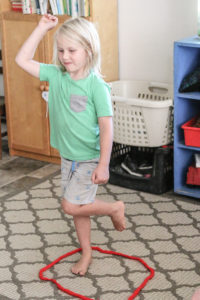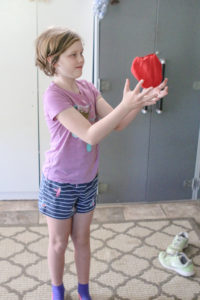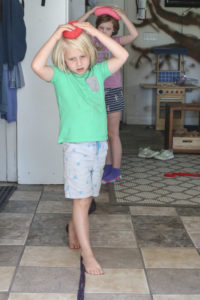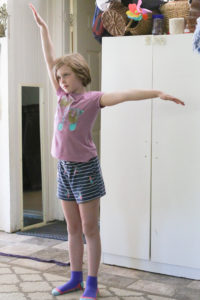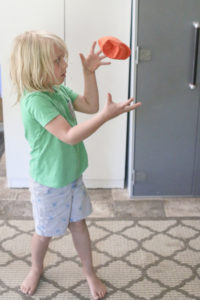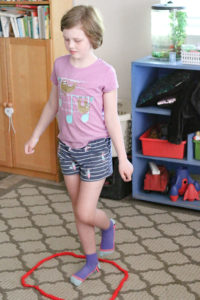What is Perceptual-Motor Development?
Perceptual-motor development is the specific process by which a person develops the system of nerve pathways that take in information through the senses, organize it, interpret it, and then respond to it. All information coming into a person’s awareness is taken in through an elaborate system of nerve pathways in his brain, which processes it. This system develops through a child’s growing years. Through touching and moving (the motor part), an infant or growing child adds meaning to the senses of seeing and hearing (the perceptual part). As these develop together, they form the complete network of information-processing pathways, which can be likened to a system of freeways.
Sometimes bridges are out. If, for some reason, a child misses a step in his perceptual-motor development, the pathways will develop incorrectly. The pathways can then be likened to a completed system of freeways with a bridge or two missing. Information will be processed poorly at the “missing bridge” and the child will be unable to make accurate and appropriate responses.
Perceptual-motor training is an effective way to build bridges, which were not built during a child’s perceptual-motor development. This training enables him to better cope with information from a printed page as well as with the dynamics of a classroom. Perceptual-motor training can re-build bridges and help the child to make accurate and appropriate responses.
Why Good Motor Development is Important
Good motor development is important because it provides the base for the development of good perceptual skills.
The first information a baby receives about his world he gets from his body’s responses to his environment. Good motor development will ensure that the child will obtain accurate and dependable information about his surroundings. It is the key to good sensory integration, that is, good visual-auditory coordination. When a child has good visual-motor skills and good auditory-motor skills he will have good visual-auditory integration because two things related to the same thing (motor) are related to each other.
Good motor development is essential for success in school because so many of the skills necessary in the classroom make use of the child’s knowledge of his body and its relationship to the environment.
The awareness of such concepts as figure-ground, laterality and directionality must be developed in relationship to the child’s own body before they can be projected outside and used for the development of good reading and writing skills
How Perceptual-Motor Training Can Help
Perceptual-motor integration relates to the manner by which the individual takes in sensory information, processes and interprets the information, and then responds automatically to it. Many children have not developed refined perceptual motor skills. Frequently, they display very inconsistent behaviors. They may have difficulty in reading, writing, spelling or math. They may have a short attention span and are easily frustrated. These children have difficulty with sitting in a classroom and processing what is being heard. By refining the perceptual-motor process, a child’s ability to learn can be greatly enhanced.
Training involves teaching specific motor skills and developing appropriate motor responses. It is the child’s ability to generalize these motor responses, which allows him/her to make accurate and appropriate responses to incoming information.
Realized Potential provides individual assessments and along with remedial exercises that parents use to help assure that their child will develop the skills they need for success in school and in their daily lives.
This program is based on the Davies-White Method and uses the Davies Perceptual-Motor Profile with gracious permission of Ann White.
Contact Us
